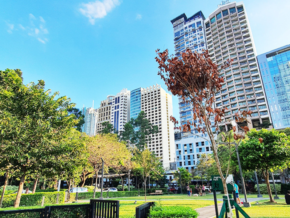GUIDE: Useful Filipino Words and Phrases for Foreigners in the Philippines
The Philippines is a beautiful and diverse country with a rich culture and unique language. While English is widely spoken and understood here, knowing some useful Filipino words and phrases can greatly enhance your experience and help you connect with the locals. Whether you are a foreigner visiting the country for a short time or planning to live here for an extended period, understanding and using basic Filipino words and phrases can go a long way in making your stay more enjoyable and fulfilling. Read on to discover 15 essential words and phrases that you can use in your day-to-day interactions in the Philippines.
 IMAGE from Unsplash
IMAGE from Unsplash
Kumusta
This is a common greeting that means “How are you?” in English. This phrase was borrowed from the Spanish words “como estas?” which has the same meaning. It’s pronounced as “koo-moo-stah.”
Salamat
Expressing gratitude is not only appreciated in the Philippines, but in other countries as well. Just say “Salamat” every time you want to say “Thank you,” and it will surely make a difference. It’s pronounced as “sah-lah-maht.”
Oo/Hindi
The former means “Yes,” while the latter means “No” in English. To agree, say “Oo,” and when you don’t, it’s “Hindi.” Oo is pronounced as “oh-oh,” while hindi is “hin-dee.”
Po
Opo is the polite version of Oo. Po doesn’t have a direct English translation but is added at the end of sentences to convey respect, much like how the Japanese use honorifics when addressing someone. It’s pronounced as “po.”
Kuya/Ate
Kuya/Ate are used to address older siblings and relatives or other people who are older than you. “Kuya” is used for older brothers or male relatives and acquaintances. It’s pronounced as “koo-yah.” Meanwhile, “Ate” is used for older sisters or female relatives and colleagues. It’s pronounced as “ah-teh.”
Tara
The closest translation is “Let’s go!” in English. It’s a phrase locals use when inviting someone to do something or go somewhere. It’s pronounced as “tah-rah.”
Pwede
This means “Can” or “May” in English. It’s pronounced as “pweh-deh.”
Magandang araw
This means “Good day” in English. It’s pronounced as “mah-gahn-dahng ah-rahw.”
Paalam
Paalam is the Filipino term used when saying goodbye whenever you or someone else is leaving a place. It’s pronounced as “pa-a-lam.”
Ingat
This is a way of saying “Take care” in English. You may say this to someone to express your concern over their safety or to wish them well. It’s pronounced as “in-gaht.”
Walang anuman
A Filipino phrase that means “you’re welcome.” If people say “salamat” or “thank you” for your act towards them, you may say “walang anuman” as a polite way of returning the gesture. It’s pronounced as “wa-lang a-noo-man.”
Masarap
Filipino cuisine is largely unknown on the global stage so if you find yourself enjoying the local dishes and delicacies during your visit to the country, show much you appreciate the offerings by saying “Masarap” to the servers or cooks. It’s pronounced as “muh-sa-rap.”
Magkano
Some Filipinos exploit foreigners by selling them overpriced items or services. Be wary of overly friendly sellers and compare prices before buying something. Once you’ve made up your mind, say “Magkano?,” which literally means “How much?” in English, to ask the exact amount of what you’re paying for. It’s pronounced as “mug-kah-no.”
Ano ang pangalan mo
When getting to know someone, say “Ano ang pangalan mo?” to ask for their name. It’s pronounced as “a-no ang pa-nga-lan mo.”
Sandali lang
Is someone rushing you? Try saying “Sandali lang.” This phrase means “Hold on” or “Just a moment” in English. It’s pronounced as “San-dah-lee lung.”
Also read: Introducing Berenta: Your one-stop shop for properties in the Philippines













